An interview with Teresa Indjein and Helge Hinteregger from NASOM
NASOM 2020/2021 Program and Concert

An interview with its founders/organizers: Mrs Teresa Indjein, Ambassador/Director General for International Cultural Relations at the Austrian Federal Ministry of European and International Affairs and Mr. Helge Hinteregger Project Leader, Jazz/World Music specialist at MICA Music Austria.
Mrs Teresa Indjein and Mr. Helge Hinteregger thank you very much for the opportunity to meet you here in Vienna and have this interview for the Belgian magazine Jazz’halo, exactly one day before the great concert you organize in partnership with the institutions you represent and Porgy & Bess tomorrow Tuesday September 29th, 2020. The NASOM 2021/2022 program will present a great concert with 5 ensembles selected in the Jazz and World Music categories. What is the NASOM program about?
Mrs Teresa Indjein: The NASOM program is short for The New Austrian Sound of Music and it is a long-term sponsorship program by the Austrian Federal Ministry for European and International Affairs to promote young musicians. The aim of NASOM is to offer support for international performances of promising young talents with the help of our global network of embassies cultural fora and consulates.
It is a good starting point for young and upcoming musicians on their way to become international performers. We know that Austria is known for music all over the world, mostly for classical music. We use this cliche of the famous film “The Sound of Music” to talk about innovation coming from Austria. By using this cliché we show the road of contemporary Austria and the Austrian music scene. Among other genres Jazz in Austria is very vibrant, amazing and creative.
When did it start? As far as I know, it was 17 years ago, correct?
Mrs Teresa Indjein: We started 18 years ago and in cooperation with MICA Music Information Center Austria with a very nice person of knowledge called Helge Hinteregger and myself. The fact is that many, many people asked us and our embassies for musicians or bands to present.
The BMEIA organize and support up to 7,000 events every year. We wanted to be sure that our network promotes quality. In order to ensure quality, we wanted to implant a sort of structure in the offer, that's how it started from random recommendations to a curated program. Not all Austrian diplomats who work abroad know exactly who is on hype and upcoming Jazz on the Austrian scene so we also wanted to help them. At the beginning we started randomly. I called a music professor and asked him who are the best students. Then Helge Hinteregger said well, and there is this player so-and-so, he needs to be promoted. That's how it started, even in the beginning with some criticism. By now of course, each time we put on the program, I think we got better. We learned and became more structured and more, let's say democratic. Now it is a curated program where most of the Austrian music scene and music institutions are involved helping us to find the best young artists.

Who makes the selection of the bands, is that you? Is it MICA and at the same time, and also there are the institutions, which institutions, which educational music schools, universities?
Mrs Teresa Indjein: Of course I'm only a civil servant. There are independent juries for each genre. They are university professors, music journalists, directors of musical institutions and music festival organizers. And the music universities behind this are very important for us: the University of Music and Performing Arts Vienna in short MDW, from Salzburg the Mozarteum University, then also the Music and Arts University of the city of Vienna MUK. And of course there are more cities in Austria besides Vienna. There's Graz, the second largest city in Austria, the University of Music and Performing Arts in Graz and the Anton Bruckner Private University in Linz, all of them are in the jury.
And at MICA for jazz, it's Helge Hinteregger who makes the selection, who is then the only jury?
Mr. Helge Hinteregger: No, only the juries decide, we are only organizing together with the Austrian Foreign Ministry the process of decision finding.
Mrs Teresa Indjein: They organize the whole process because there are hundreds of candidates. They have to be screened and the information should be well prepared to help the juries.
Could you please tell us a little bit how the process does happen if there are hundreds of bands, how does that take place?
Mr. Helge Hinteregger: There are five genres and each genre gets its own jury. So there are experts on all genres. We have classically composers and teachers from the universities who only decide which classical ensemble is part of the next edition. And we have the jazz departments of the universities and festivals and journalists, and in the field of jazz who decide which jazz ensemble is in the next, edition. We have five juries and they meet online to make it easier for them.
So there are videos or do they play live and live streaming?
Mr. Helge Hinteregger: The musicians have to provide live videos and online streams. These bands should play the next two years, all over the world. They have to provide basic information for every promoter in the world online through websites and streaming platforms. And they must have some kind of history playing outside of Austria.
Okay. And one thing I read about is the age, the age should be maximum 35 years old.
Mr. Helge Hinteregger: Except one member of the ensemble can be older because our main approach together with the Cultural Department of the Ministry for Foreign Affairs is to support artists to start their career. You won't start your career when you're 50 or 60 years old, there are some exceptions, but normally you should start in this kind of future career in your mid late twenties.
We want to push them and be visible in the world. It's the start of being part of a network the Cultural Department of the Foreign Affairs Ministry provides, also the years after the two years of the supporting system are done. The bands will be part of the so-called family of New Austrian Sound of Music.
When does the process of the selection start?
Mr. Helge Hinteregger: In February the year before. And it would take until the end of April, beginning of May until the decisions are taken.

In all the categories, in all the genres?
Mr. Helge Hinteregger: Yes. After the selection an information brochure also digital is produced and the selected bands and the embassies and cultural fora should have enough time to prepare the first season. And we also do all the interviews and portraits with the ensembles.
In regards to Jazz Mrs Teresa Indjein, can you describe the current Austrian Jazz arena?
Mrs Teresa Indjein: I think every description is always a subjective look and I'm not sort of a musicologist or a scientist as I see it also in comparison let's say to my youth, like 30, 40 years ago I find that there were always good jazz players in Austria, since I grew up, there was always amazing talent. What I find particularly exciting these days is very strong, individual talents who dare to go musically an individual road.
If I look at the past when I spent my youth in Viennese Jazz Clubs and beyond there was more orientation to the Afro-Americans (USA). However, ideal players had somehow a desire to become a bit like them and our heroes, like I saw that, Hans Salomon has passed away. Like he's getting close in his mastery to these other American players.
Today the scene is really fantastic at this Porgy & Bess Jazz Club, which is one of the best in Europe where the whole world performs. I find that the Austrians are very daring. Most of all, they are masters, many of them very early on. Excellent technique rather than musicality. Vienna is at the crossroads of many cultures, these players take up so much of that stuff and find their very individualistic roads to express their sounds. There are the sounds from the Balkans that come into the Jazz. There is the funky stuff. There is the very creative, contemporary, absolutely experimental sound that comes into it, that sort of feministic approach. I find it's fantastic that women are playing and they're also playing drums or bass or bass clarinet.
I also like the sort of the crossing over of styles and techniques. Comparing it to my past they said: okay, this is somebody who plays classical music. The classical players are very good at this and they can do fantastic cite reading, but they know nothing about phrasing (laughs) and the Jazzists are good and creative, but they don't have a certain discipline when it comes to holding the rubato, as long as it should be held. And then of course, there's the whole thing of scene of world music and experimenting with different rhythms and sounds. Today the youngsters in Vienna or in Austria easily blend all of this and make it their own and give their own replies to it.
There are two sisters from Upper Austria called the Duo 4675, the Wiesinger sisters. I recently saw them in a concert. Two sisters from the countryside. So they had probably, you know, the early youth with Austrian Folklore music at the music school, playing Polka, March music and Waltz and so on. All of a sudden they not only have the self-assuredness and the technical mastery. The two sisters together with the saxophone and the double bass, or also sometimes a bit of a synthesizer. You hear them, they do their own songs and the evening with them goes. One moment you think of Jan Garbarek, but it's their own compositions. It becomes very meditative, almost sort of an esoteric kind of thing, where you feel like now you want start the meditation. It turns into a funny riff of a pop song, which has some feminist approach about dating on the internet. And they say you know, something like this, it's not the way I look, the way I look is not the way I am. Then it goes back to the jazzy theme and back again to this and it's their own composition. And I feel that these young people have already sort of a big musical past in them and can work with it creatively. And this is a new Austria. I think it's amazing.

Sketchbook Quartet
You have the feeling, obviously, and the knowledge, what would you say? Is there really an Austrian Jazz?
Mrs Teresa Indjein: Look I am an Austrian diplomat. So I spent my whole life representing what I see is Austria culturally, so that is something like thousand years of history and in all areas of the arts and so on. I would say, yes, there is something Austrian.
Of course you can't decipher and don't make a scientific project out of it. But what I would say, because I'm also here to promote, Austria is a connection to traditions and a tradition of being very creative and working openly and freely. What you pick up from the streets, let's say here in Vienna or beyond what is there and probably others do it too. I don't know, I do not have an exact analysis of how it sounds or what is typically Austrian, but for sure it gets typically Austrian if the youngsters start to work with folklore themes, or especially, you know, not to underestimate this, the whole genial stuff that comes up from the Balkans, let alone Bulgaria, Romania, Macedonia, all these, you know, Vienna is a crossroads for that. And there are some also rhythmically and musically mind-blowing stuff going on with this. So is this Austrian Helge? I don't know help me, what would you say?
Mr. Helge Hinteregger: I totally agree. Because it's a mixture of the people living here as part of this country, they're feeling they are like Austrians.
Mrs Teresa Indjein: Austria is colourful, vibrant, hip.

How would you describe the Austrian Jazz arena?
Mr. Helge Hinteregger: It's an open-minded scene of young and elder people. I would say they are proud of being rooted here, although they came from other countries. I think 30 years ago, people wanted to sound like somebody outside there. Now they want d to sound the way they feel and they don't care what other people think. And you also feel this kind of a mixture from the Balkans, from the former Eastern countries and also the Alpine aspect.
Mrs Teresa Indjein was describing the Austrian jazz arena as having amazing talent. Where is this talent coming from? From the old teachers like Mozart?
Mr. Helge Hinteregger: There is a new generation of teachers at the universities. These teachers want their students to become a much better musician and much more interesting musician as they are themselves. So they are forcing them to toil all kind of borders more than they did, and they support them in the way they are doing, so they are giving all the knowledge and the history and the fight against this conservative approach, pushing them to go further, take the flame, but bring it to another level.
The NASOM 2020/2021 concert as we know is going to happen tomorrow since these 18 years of history, do you have a favourite concert?
Mr. Helge Hinteregger: No, because there are lots of very good bands I've seen there. There's not as to say one concert which blew me away because there were lots of moments where I thought, wow, this is great music.
What's your feeling for the NASOM 2020/2021 concert that is going to take place tomorrow?
Mr. Helge Hinteregger: Tomorrow, it's difficult because it's in this pandemic's time. And it's a hard time. We are videotaping it to put it in on the streaming platforms, which we haven't done before. And it will be the first time that the program will be one year longer because of the pandemic. It will be dispensed, the bands will be also supported in 2022 because the musicians lost a lot of concerts this year.

Viech
By saying supported, what do you mean? What do they get?
Mr. Helge Hinteregger: The musicians get all the travel costs through the world for three years and all the cultural forums and the embassies, are trying to organize concerts, in their possible range. And it gives them a chance to set up their own network of contacts.
Who makes the, the contact with the venues or the festival?
Mr. Helge Hinteregger: On the one hand it's the cultural fora, then we are creating international projects with festivals and the musicians themselves, the more they do, the more success they will have.
Fantastic! As you just mentioned, despite the situation with this pandemic, you are still doing it, and that's something amazing. It's fantastic that you didn't cancel it.
Mr. Helge Hinteregger: But it's also because this is a very open-minded department here, this Cultural Department in the Ministry of Foreign Affairs. Teresa Indjein and Ingrid Köhn-Dursy give a lot of support. Since they are on duty, many more things are happening because they are also pushing it. Without them the idea wouldn't be on the level on which it is now. Ingrid Köhn-Dursy evaluated the support in 2019. The result was 435 concerts of the young NASOM artists in 65 countries.
What will be the future concerning the pandemic situation?
Mr. Helge Hinteregger: We don´t know. But we don´t give up thinking positive. The bands will play and travel. Under which condition we don´t know now. What we know is artists and those who support them like this Cultural Department in the Ministry of Foreign Affairs never give up.
Dear Mrs Teresa Indjein and Mr. Helge Hinteregger thank you both very much.


Duo Hofmaninger: Schartz Lisa and Judith
Text and photos © Federico Garcia
September 28th, 2020
Other
In case you LIKE us, please click here:

Foto © Leentje Arnouts
"WAGON JAZZ"
cycle d’interviews réalisées
par Georges Tonla Briquet

our partners:



Hotel-Brasserie
Markt 2 - 8820 TORHOUT
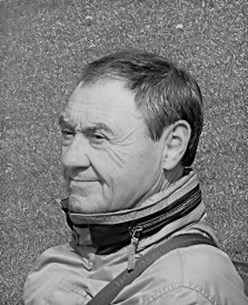
Silvère Mansis
(10.9.1944 - 22.4.2018)
foto © Dirck Brysse
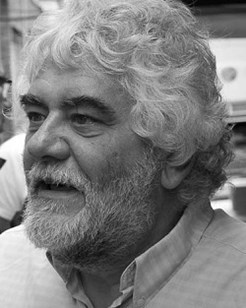
Rik Bevernage
(19.4.1954 - 6.3.2018)
foto © Stefe Jiroflée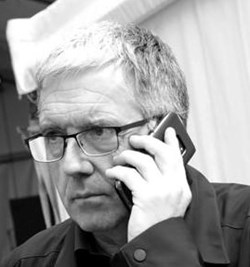
Philippe Schoonbrood
(24.5.1957-30.5.2020)
foto © Dominique Houcmant
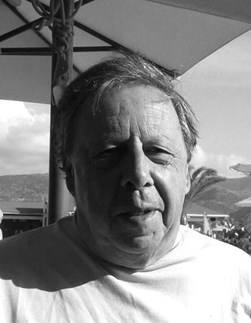
Claude Loxhay
(18/02/1947 – 02/11/2023)
foto © Marie Gilon
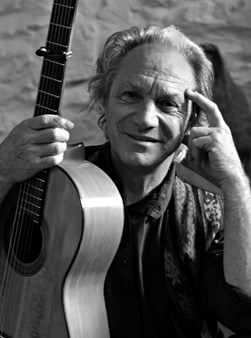
Pedro Soler
(08/06/1938 – 03/08/2024)
foto © Jacky Lepage
Special thanks to our photographers:
Petra Beckers
Ron Beenen
Annie Boedt
Klaas Boelen
Henning Bolte
Serge Braem
Cedric Craps
Luca A. d'Agostino
Christian Deblanc
Philippe De Cleen
Paul De Cloedt
Cindy De Kuyper
Koen Deleu
Ferdinand Dupuis-Panther
Anne Fishburn
Federico Garcia
Jeroen Goddemaer
Robert Hansenne
Serge Heimlich
Dominique Houcmant
Stefe Jiroflée
Herman Klaassen
Philippe Klein
Jos L. Knaepen
Tom Leentjes
Hugo Lefèvre
Jacky Lepage
Olivier Lestoquoit
Eric Malfait
Simas Martinonis
Nina Contini Melis
Anne Panther
France Paquay
Francesca Patella
Quentin Perot
Jean-Jacques Pussiau
Arnold Reyngoudt
Jean Schoubs
Willy Schuyten
Frank Tafuri
Jean-Pierre Tillaert
Tom Vanbesien
Jef Vandebroek
Geert Vandepoele
Guy Van de Poel
Cees van de Ven
Donata van de Ven
Harry van Kesteren
Geert Vanoverschelde
Roger Vantilt
Patrick Van Vlerken
Marie-Anne Ver Eecke
Karine Vergauwen
Frank Verlinden
Jan Vernieuwe
Anders Vranken
Didier Wagner
and to our writers:
Mischa Andriessen
Robin Arends
Marleen Arnouts
Werner Barth
José Bedeur
Henning Bolte
Erik Carrette
Danny De Bock
Denis Desassis
Pierre Dulieu
Ferdinand Dupuis-Panther
Federico Garcia
Paul Godderis
Stephen Godsall
Jean-Pierre Goffin
Claudy Jalet
Chris Joris
Bernard Lefèvre
Mathilde Löffler
Claude Loxhay
Ieva Pakalniškytė
Anne Panther
Etienne Payen
Quentin Perot
Jacques Prouvost
Renato Sclaunich
Yves « JB » Tassin
Herman te Loo
Eric Therer
Georges Tonla Briquet
Henri Vandenberghe
Peter Van De Vijvere
Iwein Van Malderen
Jan Van Stichel
Olivier Verhelst



